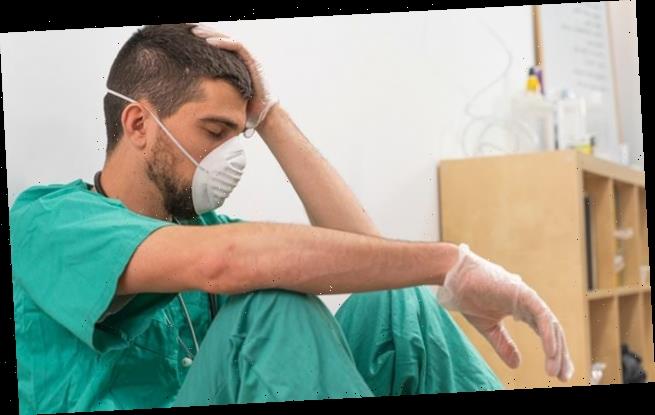Candida auris: Expert shares tips on protecting from fungus
When you subscribe we will use the information you provide to send you these newsletters.Sometimes they’ll include recommendations for other related newsletters or services we offer.Our Privacy Notice explains more about how we use your data, and your rights.You can unsubscribe at any time.
Scientists have discovered the pathogen in the wild for the first time 11 years after it infected a patient in Japan. New research published in the journal mBio describes how researchers traced the Candida auris yeast to two sites on the Andaman Islands in the Bay of Bengal. The pathogen has been responsible for multiple outbreaks across the globe, with more than 1,600 cases in the US since January 19 this year.
Until now, it has been something of a medical mystery where the fungus came from.
Candida auris was first named after infecting a patient in Japan in 2009 – although it was first identified early as 1996 in South Korea – after which it was quickly discovered on three more continents.
The US Centers for Disease Control and Prevention (CDC) in 2019 branded the pathogen an “emerging fungus that presents a serious global health threat”.
Concerns surrounding the fungus are threefold but hinge on its ability to withstand most forms of treatment.
In some cases, strains of the pathogen have shown a remarkable ability to withstand all available classes of antifungals.
The fungus can be somewhat hard to identify, which may lead to misidentification and wrong treatment.
And the pathogen’s outbreaks in hospital settings mean special precautions need to be taken to prevent its spread – much like the coronavirus.
Infections can be fatal, with the CDC estimating between 30 and 60 patients who contracted the fungus have died.
However, the available data is limited and many of the patients already had serious underlying conditions.
The CDC said: “Most C. auris infections are treatable with a class of antifungal drugs called echinocandins.
“However, some C. auris infections have been resistant to all three main classes of antifungal medications, making them more difficult to treat.”
Coronavirus: Expert warns of 'inevitable third wave' in autumn
The pathogen can spread through contact with contaminated surfaces, medical equipment and even between humans.
According to the new research, species closely related to the fungus have been previously found in the wild.
Dr Arturo Casadevall at the Johns Hopkins Bloomberg School of Public Health in Baltimore, who penned an editorial attached to the study, said: “It’s a medical mystery, where did it come from.”
One theory suggests global warming has allowed the pathogen to adapt to higher temperatures, making it easier for Candida auris to jump to humans.
The study’s authors analysed 48 samples of soil and water from eight sites on the Andaman Islands.
These included rocky shores, sandy beaches, mangrove swamps and tidal marshes.
DON’T MISS…
Covid symptoms: Insomnia could be a lingering side effect [INSIGHT]
Bible verses about coronavirus: What does the Bible say about Covid19? [ANALYSIS]
Life after death: THIS is the process you will go through when you die [REPORT]
The Andaman Islands are an isolated archipelago within the Bay of Bengal that boast an idyllic, tropical climate.
The researchers identified the fungus in two samples collected from a beach and tidal marsh.
In the beach samples – an area with frequent human activity – the fungus was found to be multidrug resistant.
In the marsh samples, the fungus was resistant when presented with antifungals.
Dr Anuradha Chowdhary, one of the study’s authors and medical mycologist at the University of Delhi, said: “The isolates found in the area where there was human activity were more related to strains we see in the clinical setting.
“It might be coming from plants, or might be shed from human skin, which we know C. auris can colonise.
“We need to explore more environmental niches for the pathogen.”
She added: “This study takes the first step toward understanding how pathogen survives in the wetland but this is just one niche.”
The researchers hope future studies will tell us more about how the pathogen thrives in the wild.
Source: Read Full Article






